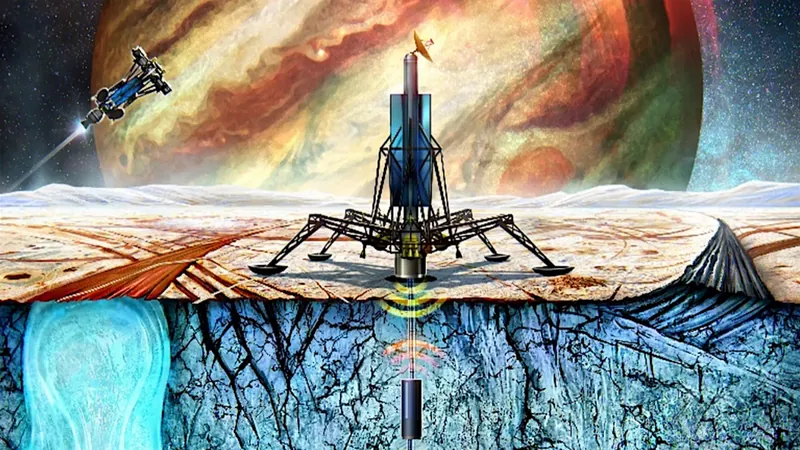
New Insights on the Descent of Thermal Probes through Europa's Ice: How Long Will It Take?
2024-11-19
Author: Nur
Introduction
In a groundbreaking study, researchers have meticulously calculated the travel times for a thermal probe descending through Europa's enigmatic ice shell, a critical component for understanding this intriguing moon of Jupiter. By simplifying the ice column into a conductive layer, the team aimed to simulate and predict the behavior of the probe as it navigates through the icy exterior.
Methodology
Employing a cellular automaton model, the descent was illustrated by closely monitoring temperature changes within the ice. Each cell's interaction was based on heat conduction principles, while cell state transition rules were intricately linked to the temperatures detected within those cells. To ensure the model's reliability, validation tests were performed, including simulating soil columns and cross-referencing results with existing experimental data.
Results
The researchers carried out simulations using two distinct cell sizes, testing 19 fixed probe temperatures and evaluating 5 different levels of ice thermal conductivity. Remarkably, smaller cell sizes (Δz = 3 mm) yielded markedly quicker travel times, with results showing a descent range from just 22 days for a probe temperature of 600 K, escalating to roughly 4 years for a lower temperature of 280 K. In stark contrast, a larger cell size (Δz = 1 m) produced much longer descent times, ranging from 27 years at 600 K to an astonishing almost 1,000 years at 280 K.
Discussion
Interestingly, while the crystal structure of the ice shell's thermal conductivity did influence travel durations, the impact was deemed modest. These findings align well with previous research that took into account extensive engineering factors of the probe design, reinforcing the idea that a thermal probe reliant primarily on heat production could successfully navigate through Europa's conductive ice shell well within the scientific mission's timeline.
Conclusion
This research offers promising indicators for future exploration missions to Europa, a world believed to house a subsurface ocean beneath its icy crust. Understanding the descent times of thermal probes paves the way for more efficient designs and approaches, ultimately enhancing our quest to uncover the secrets of potential extraterrestrial life in our solar system. Scientists and space enthusiasts alike eagerly await the results of upcoming missions that could finally probe beneath Europa's icy veneer!
Stay Tuned
Stay tuned for more updates on this thrilling journey into the cosmos!


 Brasil (PT)
Brasil (PT)
 Canada (EN)
Canada (EN)
 Chile (ES)
Chile (ES)
 España (ES)
España (ES)
 France (FR)
France (FR)
 Hong Kong (EN)
Hong Kong (EN)
 Italia (IT)
Italia (IT)
 日本 (JA)
日本 (JA)
 Magyarország (HU)
Magyarország (HU)
 Norge (NO)
Norge (NO)
 Polska (PL)
Polska (PL)
 Schweiz (DE)
Schweiz (DE)
 Singapore (EN)
Singapore (EN)
 Sverige (SV)
Sverige (SV)
 Suomi (FI)
Suomi (FI)
 Türkiye (TR)
Türkiye (TR)